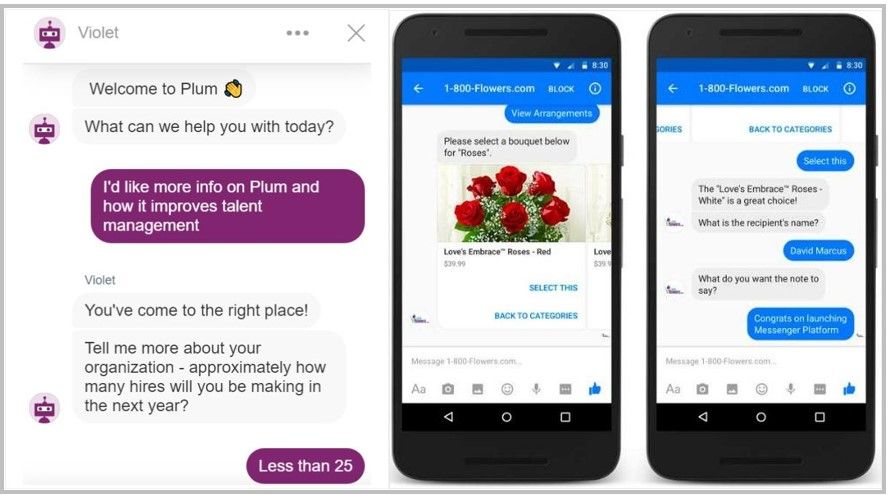
Anvika Kapoor
Content Specialist
Author Bio:
A content specialist at Ukti by day and a writer, traveler, and SaaS lover by night. Anvika makes technical stuff easy to understand and less boring to read.
As marketing tools and technology are evolving, so is the digital marketing landscape. Here are six trends we expect to become bigger in 2022 and beyond.
If you’re a marketer in today’s Information Age, keeping up with the latest digital marketing trends is a 24x7 job.
Every other day, you will discover a new keyword or technology hijacking social feeds, being deemed as the next big thing. Like NFTs, Metaverse, voice search, and so on. While some trends might be fads, others will offer you real opportunities for growth. That’s why staying on top of the market trends is non-negotiable.
But to truly jump on the trend wagon, it's not enough to only know of the new-age technology or tactic. You must know how to leverage them across marketing channels to attain real gains. So, if you want to stand out in an already overcrowded market, you must adopt modern-day marketing tactics.
This free guide explores six highly vouched-for digital marketing trends in 2022. Take a look before you plan your next campaign.
6 Digital Marketing Trends You Need to Know in 2022
Here are the six of the most significant trends of 2022 becoming a game-changer for digital marketing.
1. AI-Powered Programmatic Advertising
Until recently, humans were buying digital ad spaces for brands by negotiating with publications. Did they always manage to get a good spot? Not really. But AI algorithms can, even after the third-party cookies are dead for good.
Programmatic advertising uses AI algorithms to automate buying and selling of digital Ad spaces with better accuracy and faster than human bidders. It can leverage first-party data on customer’s browsing behavior and preferences, which helps advertisers run hyper-personalized Ad campaigns and do contextual targeting.
So, if your customer acquisition channel requires paid advertising, shift focus to programmatic advertising. It is a cost-effective yet effective way to get guaranteed ad impressions from the right publisher sites in real-time.
2. Conversational Marketing
With conversational marketing, you can nurture prospects by pitching them products, offering them resolutions, and collecting feedback through a conversation. This can be done through chatbots, virtual selling assistants, personalized emails, and videos.
But the concept of conversational marketing isn’t new. Why is it becoming a hot trend now? A couple of reasons:
- It forges an instant bond with the customer
- It is device-agnostic and works across channels
- It answers the customer's concerns immediately
A whopping 82% of customers want quick responses or resolutions to their brand-related questions.
This type of marketing caters to a simple mindset – instant gratification! Customers who are looking for a solution "now" won’t wait around till "later” to find the answer.
In fact, at least 41% of customers engage with conversational marketing tools to make purchases. This means if a brand can engage a prospective customer during their time of need, they are more likely to get the upper hand against their competitors.

Source: WPForms (B2B and B2C examples of conversational marketing)
3. Personalization
Personalization is a trend that never goes out of style in digital marketing. Pick up any marketing trends list for 2021, 2020, 2019, or beyond, and you'll find ‘personalization’ on it.
Long gone are the days when sending email blasts or generic advertising messages actually got business for brands.
Today, brands can leverage customer intent data and other individual information, like firmographic, technographic, psychographic, etc., to gain deeper insights into customer preferences. And use the knowledge to craft personalized pitches to target them.
Not only does personalized communication boost ROIs, but it also forges customer loyalty, as they feel you care about what they want rather than blindly selling them what you want.
According to a Salesforce Study, marketers believe that personalization through different digital marketing tools like emails, websites, social media, etc., positively affects three key areas.
- 63% of marketers believe it skyrockets conversion rates.
- 64% of marketers believe it improves the overall customer experience.
- 55% of marketers believe it heightens visitor engagement.
Consider the use case of the low-cost airline EasyJet. In its effort to personalize, the airline used its customers' travel history to email them suggestions of where they can travel next, along with the EasyJet fares and a CTA to click through the email and book flights.
They sent a thumping 12.5 million unique emails to realize a whopping 25% higher click-through rate than their non-personalized emails.
4. Video Marketing
Experts claim video marketing is here to stay. And not just in 2022 but for at least the next 5 or 6 years.
Today, 60% of brands use video marketing, whereas 61% of marketers deem it an “extremely important” element of their digital marketing strategy.
And no – video marketing is not just making and promoting YouTube videos. There are several platforms driving video marketing in addition to YouTube. Like Vimeo, Filmora, Wistia, and so on. To leverage any of them, you only need to create high-quality videos, which can be product-related or educational in nature.
You can promote a pre-recorded video on YouTube, Facebook, Instagram, and LinkedIn (which works especially well for B2B prospects). Although, deploying pre-recorded video is not the only way to market your wares. Try streaming Live videos and engaging with your prospects who post comments on live feeds in real-time.
For instance, the next time you wish to launch a new offering or want to educate prospects about the common challenges within your industry, start a live broadcast on LinkedIn, Facebook or Instagram.
5. Voice Search Optimization
As smart speakers like Alexa, Google Assistant, or Siri become more commonplace, voice search optimization is becoming a go-to marketing tactic.
To get started with voice search marketing, brands can leverage smart speakers in a couple of ways.
- Alexa Flash Briefing – Flash Briefings is a popular feature on the Alexa smart speaker that speaks quick bits of information for the user. It can range from a blog feed to a joke, an interview, a news item, a brand sale, etc. Even though millions of prospects use smart speakers (94 million in 2019, to be precise), very few brands create content for it. You can gain a first-mover advantage by creating pithy content that smart speakers like Alexa and Google Home speak and get interested users to explore further.
Additional Reading: Steps to create Alexa Flash Briefing
- Create a free Useful App - You can also create a free brand-relevant app for Google Home and Alexa. This app must provide a valuable service to your audience. A handful of marketers are deploying apps on Alexa and Google Home to connect with target customers by providing them with relevant product information, industry news, etc.
Additional Reading: Steps to create Alexa Skills
6. Long-Form Content
Analyze SERPs for any keyword, and you’ll find one thing common across the pages listed on Google’s page 1: the content length is above 2000 words. This is a testament to the effectiveness of long-form content.
Brands can post well-researched and SEO-optimized long-form targeted content on their own blog sites or other high-domain websites to attract organic traffic. Nowadays, marketers can also use LinkedIn's publishing platform to post long in-depth articles.
The primary objective of long-form content is to offer the reader valuable information about a concept or product, so they spend more time on your website and take some action. Like signing up for a newsletter or requesting a product demo.
Try publishing long-form content based on the pain points or search intent of your prospective customers. If a particular long-form piece is getting a lot of impressions, you can gate it in exchange for email information. This is a direct way to generate inbound leads.
If done well, long-form content can not only help generate organic leads but can also help you establish your brand as a thought authority within your domain.

Source: HubSpot (HubSpot providing free and useful long-form content with the right CTAs to their readers)
Wrapping Up
So, there you go! The top six digital marketing trends you absolutely cannot ignore anymore.
From AI-driven marketing to long-form content creation, the breadth of the digital marketing landscape is changing fast. Embracing one or all of them might require a tad bit of patience, but allowing your marketing team to learn and embrace them will surely get you noticed by your target audience.
Happy digital marketing!












